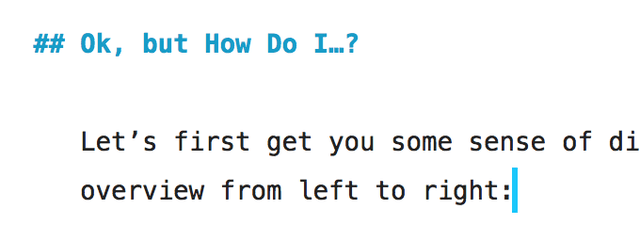Re: Resting Rows
❡The above is a note added to an earlier post…
 The Local Yarn
The Local Yarn 
The above is a note added to an earlier post…
I’ve only just begun reading The Hauerwas Reader. Until now I have been unfamiliar with Stanley Hauerwas, or with his ideas. My impression of him as a person is probably not important, but I was struck by this paragraph from the biographical first chapter:
Stanley Hauerwas loves a good argument. Indeed, to be able to have an argument at all is a significant moral achievement, for it presupposes some common understanding of the goods at issue.
Thus something like the reverse of Rodney King’s famous appeal after the L.A. riots is Stanley Hauerwas’s plea: Can’t we all just have an argument? I have known Stanley for nearly two decades now, half of which I spent being scared to death of him. What I gradually came to realize is that I was not disturbed by his ferocity but rather by his lack of guile. His frank unwillingness to dissemble in the interests of “just getting along” came as a terrible shock to a nice Midwesterner who hates the appearance of the conflict more than the conflict itself. Despite his confrontational image, however, Stanley does not seek to create discord, but only refuses to get along if it means covering over conlicts that are already there. Christian pacifism must be an active peacemaking, the first step of which is to locate and truthfully name what is in conflict.
It was the phrase “frank unwillingness to dissemble in the interests of ‘just getting along’” that grabbed me. Oh how that frightens me; oh, how it appeals to me.
One of my big problems is that I am often so annoyed that we can’t all live in love that I want to burn everything to the ground. (And of course, fearing the appearance of conflict, I dissemble more than is healthy and less than consistently.) This must be deeply incoherent, which is why I hope that someone like Hauerwas can help me out.
Of course, this is just Stanley the Teacher, Stanley the Academic we’re talking about here; not necessarily (at least in this excerpt) Stanley the family member or the Christian brother.
Maybe if, like Hauerwas and his biographer, I’d chosen to follow study and dispute as a vocation, I’d have found it easier to strike that balance: through time devoted to study, better able to comprehend my ideals, and through dispute, better able to understand their weaknesses. And, in any case, less of a need to carry my freshman ideals on my shoulder when I eat with friends and family.

When, after several days of sunny and clear weather, we suddenly have the lid back on again, I may notice in myself an instinct to hop up and scrape my palms against the clouds, as one does with the low concrete ceilings in parking ramps; to stir them, even (though I know it is futile, it would be not so much work as earnest play) to break them. Much as I lift my daughter up in our house and let her press her back up to the textured drywall ceiling; when we are outside I do not lift her so high.
It is the clouds, not the sun, that make me wish to fly. That I cannot touch them seems, at last, and still, very arbitrary. It is the old wish to be sure you are real, to be sure your hands and words can still change things.
The clouds divide me from other people — not because I am above and the rest are below, or vice versa, but because they actively interfere among us. A car behind me flashed its bright headlights at me, twice, to be sure I saw. And because I could not be sure what was wrong, I pulled off the freeway, and made two more rights into an elevated parking lot. The other car kept going; it made no move to follow or explain what it had done. I walked around my car and it was fine. I looked up at these clouds and I was angry that I had no time to stand and watch them, because to be safe in life, and so that I could be comfortable, I had traded that away. Maybe I could trade again and regain other hours than the ones I had given up but I wasn’t sure. If you trade right, you can absolutely go up and stir those clouds.
But I had no time, and that evening, without even stopping to eat after work, Jess and I traded even more time to borrow and drive a huge pickup truck an hour away over too-small back roads, appropriate for ourselves some material thing, and return. I thought, now is the time to tell her. I thought, we’re alone together, with nothing to do but listen. But the clouds sent down water in loud staticky sheets and rapped their knuckles all over the roof and windshield, and masked my words. The clouds divide me from other people — not because I am above and the rest are below, or vice versa, but because they actively interfere. Hold me at arm’s length, will you, and laugh as I swing my hands, unable to reach you?
My seat in this oversized white truck was so far off the ground, I might step on another car and hardly feel it; it was only my arbitrary, faulty attention that proposed that I would not smudge out the people to my right or left. It is when I am tired and my eyes hurt and my ears are filled with the echo of hail that I wish to touch, edit, and break and re-form my own mind; but when it is clear, I hardly know it is there.

Last night was one of those perfect summer evenings, warm with no humidity. By some miracle I was done at work by four o’clock. “Let’s go out,” I said after I’d pulled up in the driveway and joined Jess on the front porch. “If that makes sense,” I said. “I haven’t started any food or anything — where should we go?” “I don’t know. Out with everyone. We could get takeout and eat by the lake.” So that is what we did.
There is a place by the lake called Burger Jones. Jess read me the menu off her phone while we were en route.
“White Trash Burger,” she read, “chicken fried bacon, fried cheese curds, velveeta. Get the Double-Wide or add a PBR Tall boy. Mushroom Swiss: melted swiss and a mound of sautéed mushrooms…”
“Hang on,” I said, “It’s hard for me to tell when you’re naming a dish and when you’re listing the things that are on it. So maybe say ‘which has’ in between those things?”
“OK,” she said. “The Hangover, which has bacon, cheddar, hot sauce and a fried egg on a homemade english muffin. El Cubano which is topped with ham—”
“Hang on,” I said. “Did you say ‘a fried egg’? On a burger? Which one was that?” “‘The Hangover’,” she repeated. “Read that one again?” She read it again. “Did you say ‘hot sauce’?” I asked. She read it again. “And it’s called ‘The Hangover’?” I asked. “Yes” she said. “That is what I’m getting,” I said.
We walked around the lake to the nearest beach with our food. There were many people on the path, lots of strollers and sports bras and hijabs. The beach was mostly empty. We sat down on the grass just to one side of the sand, a covered wagon’s length from the water. A man with a metal detector scanned the grass all around our area. He stopped a couple of times to dig — it was hard to tell, watching discretely, but I don’t think he found anything. Our picnic blanket was the one spot he couldn’t scan.

Maximilian Kiener recently created a beautiful interactive visualization of this concept — and gave us a great little window into its history, to boot.
On his site, Kiener states “This theory was first put forward by Paul Janet in 1897” but does not directly offer a source. This piqued my curiosity, so I emailed Kiener to ask about it. He very kindly replied that he had read it in an article by Steve Taylor for New Dawn Magazine: The Speed of Life: Why Time Seems to Speed Up and How to Slow it Down. Taylor writes:
This theory seems to have been first put forward in 1877 by Paul Janet, who suggested the law that, as William James describes it, “the apparent length of an interval at a given epoch of a man’s life is proportional to the total length of the life itself. A child of 10 feels a year as 1/10 of his whole life – a man of 50 as 1/50, the whole life meanwhile apparently preserving a constant length.”
He also quotes Janet as saying:
“Whoever counts many lustra in his memory need only question himself to find that the last of these, the past five years, have sped much more quickly than the preceding periods of equal amount. Let any one remember his last eight or ten school years: it is the space of a century. Compare with them the last eight or ten years of life: it is the space of an hour.”
Taylor is quoting from chapter 15 of William James’s The Principles of Psychology, which in turn gives the source of the Janet quotes as the Revue Philisophique, vol III p. 496.
The above is a note added to an earlier post…
Processing images is so much fussier than processing text. Everything seems simple until you need to add in the pictures.
In my quest to make my website directly translateable into a print book, I’ve had to think about how to handle images. On a website you want to keep things small so the reader can download them quickly. But when printing a book you want images to be of the highest quality possible — the size of the image file is no constraint.
So I end up creating and managing two copies of any images I use. I want to keep the high-quality original with my local copy of the post (for later use in the print version), and create a smaller, optimized version for use on the web.
This could easily become very tedious. I needed a way to automate this process.
I finally kluged together an Alfred workflow powered by a couple of shell scripts. Here it is in action:
The code powering this workflow is messy but the result is fast and elegant compared with doing it by hand. When applied to photos taken from my iPhone 5S, the web-optimized image is typically about 90% smaller than the original.
For my websites, I try to ensure that images look good even on Retina screens. My approach to Retina-quality responsive images is simple: serve up the same image to everyone and display it scaled down by at least 2⨉ (or more on smaller viewports). I don’t use server or scripting hacks to try and figure out which version of an image file to serve up, and until the wrinkles get ironed out I won’t touch the new srcset attribute with a ten-foot pole. Making the same image file work for everyone isn’t a terribly resourceful way to use bandwidth, so I compensate by optimizing that image as much as possible without noticeable loss of quality.
Since it’s so specific to my unusual setup and priorities, I probably won’t bother to clean this up enough to distribute it as a packaged workflow, but I can share the most relevant portions of the code easily enough.
After creating a new copy of the image using the short name provided, the workflow script tests to see if the original image is wider than 2,048 pixels wide:
imagewidth=$(/usr/local/bin/identify -format "%w" "$query")
if ((imagewidth > 2048)); then
/usr/local/bin/mogrify -path "$foldername/" -filter Triangle -define filter:support=2 -thumbnail 2048 -unsharp 0.25x0.08+8.3+0.045 -dither None -posterize 136 -quality 82 -define jpeg:fancy-upsampling=off -define png:compression-filter=5 -define png:compression-level=9 -define png:compression-strategy=1 -define png:exclude-chunk=all -interlace none -colorspace sRGB "$foldername/$newfile"
fi
The parameters for the mogrify command come from the post Efficient Image Resizing With ImageMagick.
I then use the TinyPNG service’s API to further optimize the file. TinyPNG is a great way to optimize both PNG and JPEG images, and an API key is free for up to 500 images per month (plenty for the average blogger). Here’s the code that sounds out the file and then downloads the result (more examples on their developer page):
JSON=`curl -i --user api:YOUR_API_KEY_HERE --data-binary @"$foldername/$newfile" https://api.tinypng.com/shrink 2>/dev/null`
URL=${JSON/*url\":\"/}
URL=${URL/\"*/}
curl $URL>"$foldername/$newfile" 2>/dev/null
Now, this takes several seconds to complete. I don’t know how to display a progress indicator in an Alfred workflow, so I’m doing it audibly by playing OS X’s built-in ping sound effect once just before the upload starts, and once when it’s over:
afplay /System/Library/Sounds/Submarine.aiff
Finally, I place the copies where they need to go: the original gets copied into an image folder next to where I save my writing; and (using scp for uploading to my web server), and copy the Markdown-style link to the clipboard (echo "" | pbcopy).
I love the thicker bright blue cursor in the Ulysses app:

This style is standard on iOS, where small screens necessitate a more visible cursor. I hope this someday becomes a system-wide option on OS X.
The above screenshot is taken from my rough review of Ulysses.
The above is a note added to an earlier post…
One of the most memorable scenes from Tolkien’s The Hobbit is found in the chapter “Riddles in the Dark”. The scene’s popularity is rather surprising when you consider that there are no great battles or speeches, no dragons or orcs; just a little hobbit and a strange subterranean creature engaged in a battle of wits.
Gollum, as the creature is named, challenges Bilbo Baggins to a game of riddles, a game in which Bilbo’s life is at stake. Gollum’s cryptic riddles are as enchanting and compelling as any other of Tolkien’s Middle Earth creations. Here is one of my favourites:
The answer, as Bilbo well knows, is wind.
Tolkien could have simply had Bilbo and Gollum fight, or developed the scene with more conventional dialogue (as he did in Return of the King where Gollum encounters Frodo and Sam, for example). But by including this riddle game Tolkien was intentionally drawing, as he often did, upon European history and culture. Tolkien was twice Professor of Anglo-Saxon (Old English) at the University of Oxford. And the Anglo-Saxons, besides being macho warmongering ale gulpers, also loved riddles — long, elaborate, even poetic riddles. See this Old English example from the 10th century Exeter book:
The answer: a storm of wind, rain, thunder, and lightning on land, a reference to the biblical flood. It’s much longer than Gollum’s, but otherwise quite similar.
There are some Anglo-Saxon riddles which a conservative Catholic like Tolkien would never dream of including in a children’s novel:
The answer? An onion, of course.1 There are many Anglo-Saxon riddles of this sort, all evoking something rude while referring to something innocent.
Anglo-Saxons favoured alliteration to rhyme, so Tolkien’s riddles do not resemble them in this sense. Latin riddles were popular in medieval Europe, but it is clear from the nature of the riddles themselves that Tolkien’s were influenced more by those of Anglo-Saxon England. Latin riddles depended on knowledge of specific stories or people in order to be deciphered, while English riddles were often about common things like the weather.
Archer Taylor identifies five different types of riddle in the Exeter book, one of which is the “neck riddle”, so named because it is used to save one’s neck.2 Neck riddles are unfair because there is no way for the person guessing the riddle to know the answer. Bilbo’s final question is a neck riddle, “what have I got in my pocket?”
Besides drawing on Anglo-Saxon culture, Tolkien seems also to have used several Old Norse sources for “Riddles in the Dark”. In the Vafþrúðnismál from the Elder Edda and in the Saga of King Heidrek the Wise, the god Odin adopts a disguise before entering into a riddle contest. His final riddle is “What did Odin whisper in Baldr’s ear before Baldr was burned on the funeral pyre?” No one except Odin himself can know this, so it’s just as unfair as Bilbo’s riddle. In each of these tales, the answerer finally realises that the riddler is Odin himself. Tolkien combines the reactions of Vafþrúðnir, who concedes defeat, and Heidrek, who attacks Odin — making Gollum acquiesce at first but then attack Bilbo later.
Another possible Norse influence on the scene can be found in Gollum’s final riddle, which Bilbo only solves by accident:
The answer is time, which is depicted here as a physical force, one which slays kings and bites steel. In one scene from the 13th century Icelandic text Gylfaginning, Thor and his pals are in the hall of a giant king named Utgard-Loki who presents them with a number of impossible challenges. After being defeated in a drinking challenge, Thor is eager to prove himself in a test of strength. Utgard-Loki asks him to wrestle an old woman named Elli. This should have been easy, but the harder Thor gripped her, the faster she stood and it wasn’t long before he was defeated. It is then revealed that the withered woman was “Old Age” personified, and that neither man nor god can ever defeat time.
Tolkien was enamoured with Norse mythology and Anglo-Saxon poetry, and it is fascinating to see how each have influenced his works. For example, the riders of Rohan from Lord of the Rings were clearly based on the Anglo-Saxons. Rohan itself was based on the country and great hall of Hrothgar from the Anglo-Saxon epic poem Beowulf.3 If you enjoyed the Hobbit or the Lord of the Rings, then I must urge you to investigate Old English and Icelandic literature, as they are equally enthralling.
Tom Rowsell is an expert on Anglo-Saxon and Norse literature. His knowledge of medieval languages are helpful for his work in the translation services industry. He also directed and presented a documentary film about Anglo-Saxons called ‘From Runes to Ruins’
Neville, Jennifer, ‘Joyous Play and Bitter Tears: Riddles and Elegies’ in “Beowulf and Other Stories: A New Introduction to Old English…” p.139↩
Lind, Carol. Riddling the voices of others: The Old English Exeter Book riddles and a pedagogy of the anonymous. Diss. Illinois State University, 2007.↩
…¶—∞✎
Hosting Your Website After Your Death:
Unlike with other digital expressions, format is not the problem: HTML, CSS, and backward-compatible web browsers will be with us forever. The problem is, authors pay for their own hosting.
…Keeping your website active is probably the last thing your family will wish to focus on in their grief. As they move on, attending to your digital affairs may not be high on their task list.
The above is a note added to an earlier post…